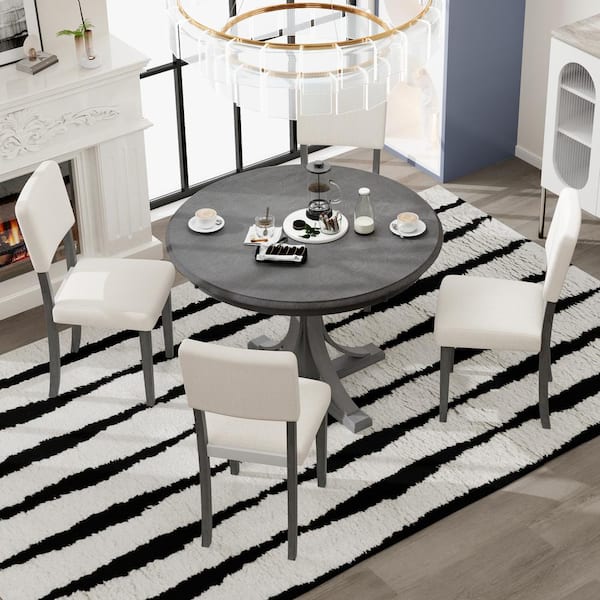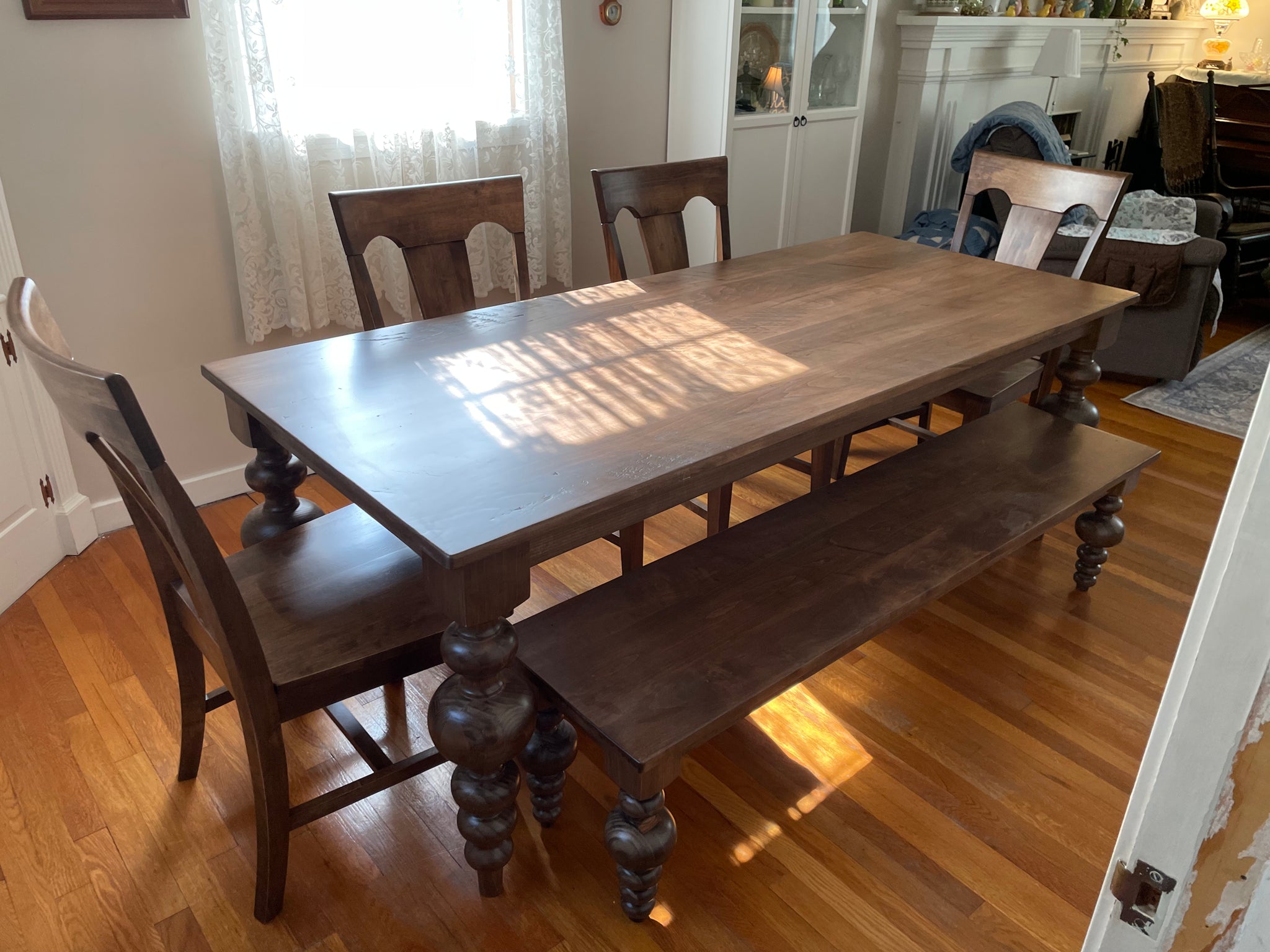Exactly How to Pick the Perfect Eating Area Table Legs for Your Home Design
Selecting the ideal dining area table legs is a nuanced process that needs cautious factor to consider of numerous aspects, including your room constraints, aesthetic preferences, and practical demands. The interplay between styles, measurements, and materials can significantly influence the setting of your eating area, making it crucial to approach this choice methodically. As you ponder the myriad options readily available, it comes to be clear that the ideal option expands beyond simple look; it can boost your total eating experience. What aspects should you prioritize to guarantee your selection matches your home's special personality?
Assess Your Eating Area
Analyzing your dining area is vital for choosing the right table legs that enhance both aesthetic appeals and functionality. Begin by determining the measurements of your eating area, consisting of ceiling elevation, floor area, and closeness to various other furnishings. This information will aid establish the suitable dimension and elevation of your eating table, which directly affects the choice of table legs.
Following, consider the design and design of your dining room. As an example, an open-concept layout may benefit from table legs that use visual agility, such as slender steel or acrylic options. Alternatively, an extra standard setup could call for durable wood legs that provide a feeling of permanence.
Review the existing shade scheme and products in your eating location. Balancing the table legs with these components develops a cohesive look that enhances the total style.
Inevitably, an extensive assessment of your eating area will certainly assist you in making a notified decision, making certain that your table legs not just enhance the visual appeal however also offer useful objectives.
Consider Your Style Preferences
When picking eating space table legs, it is crucial to assess your individual design preferences, as they considerably affect the total aesthetic of your eating room. Your selection of table legs can either complement or comparison with existing decoration, making it vital to align them with your recommended interior decoration style.
If your home leans towards a modern visual, take into consideration sleek metal or minimalist wooden legs that provide a clean, clean look. For a more typical technique, luxuriant wood legs with intricate makings can add a touch of elegance and refinement. Industrial designs take advantage of durable, basic materials such as redeemed timber and metal combinations, showing a tough beauty.
Additionally, farmhouse and rustic styles usually prefer strong, beefy legs that stimulate a feeling of warmth and convenience. Conversely, if your décor is eclectic, you could pick unique shapes or a mix of materials to develop visual interest.

Evaluate Material Options
The option of product for dining space table legs plays a pivotal function in both sturdiness and aesthetic appeal. Usual materials include wood, metal, and composite choices, each offering unique features that can affect the general look and longevity of your table.
Timber is a classic choice, understood for its warmth and adaptability. Hardwoods like oak and walnut supply remarkable strength and can be ended up in numerous discolorations to match any kind of style. However, softwoods like yearn are a lot more susceptible to scrapes and damages, making them less excellent for high-traffic areas.
Steel legs, commonly crafted from steel or light weight aluminum, exhibit modernity and commercial appeal. They are highly resilient and immune to wear, making them suitable for family members with children or constant events (dining room table legs). In addition, metal can be finished in different colors, improving the modification possibilities
Composite materials, such as MDF or laminate, offer cost and varied styles. While normally much less durable than solid wood or steel, they can still give a stylish look and are frequently very easy to maintain.
Ultimately, the material you select need to straighten with your way of living, visual preferences, and the level of use your dining table will certainly experience.
Determine Height and Dimension
Choosing the proper height and dimension for your dining-room table is essential for both performance and comfort. The standard height for dining tables typically varies from 28 to 30 inches, enabling sufficient legroom for a lot of people when seated. However, it is important to consider the dimensions of your eating space and the types of chairs you plan to use.

Additionally, consider the percentages of your dining-room. A larger table in a sizable area can create a grand atmosphere, while a smaller table functions well in more intimate settings. Ultimately, the appropriate height and size will certainly balance with your general decoration and improve the dining experience for you and your visitors.
Explore Personalization Opportunities

Furthermore, the style of the legs can be customized to fit different styles, such as rustic, modern, or commercial. Tapered legs can stimulate a mid-century contemporary feel, while chunky, block-style legs might reverberate with traditional or farmhouse decor.
Home owners can likewise check out shade surfaces, from natural timber stains to repaint, allowing them to match or contrast with the table top and surrounding design.
Additionally, leg height can be gotten used to fit certain seating plans or individual preferences, improving both convenience and capability.
Lastly, special embellishments, such as makings or attractive brackets, can better individualize the table legs, making the eating experience not just a statement but a dish item in the home. By considering these modification options, property owners can create an eating space table that truly reflects their uniqueness.
Final Thought
Selecting the ideal dining room table legs requires careful consideration of different aspects, including the dimensions of the eating area, design preferences, product toughness, and desired height. Personalization options even more enhance the capacity to attain a cohesive aesthetic that enhances the overall decor. By methodically assessing these aspects, property owners can make sure that the selected table legs not just fulfill practical requirements yet also contribute favorably to the eating experience and setting of the home.
Selecting the ideal eating space table legs is a nuanced procedure that calls for mindful factor to consider of different elements, including your space constraints, visual choices, and useful demands.Assessing your recommended you read dining space is important for choosing the right table legs that enhance both aesthetics and performance.When establishing dimension, measure the location where the table will certainly be put to ensure it fits pleasantly, allowing for at the very least 36 inches of clearance around the table for easy movement. A bigger table in a spacious area can create a grand atmosphere, while a smaller table works well in more intimate settings.Picking the excellent eating room table legs needs careful consideration of numerous factors, consisting of the measurements of the eating room, style preferences, product longevity, hop over to here and preferred height.